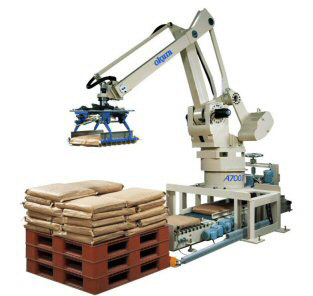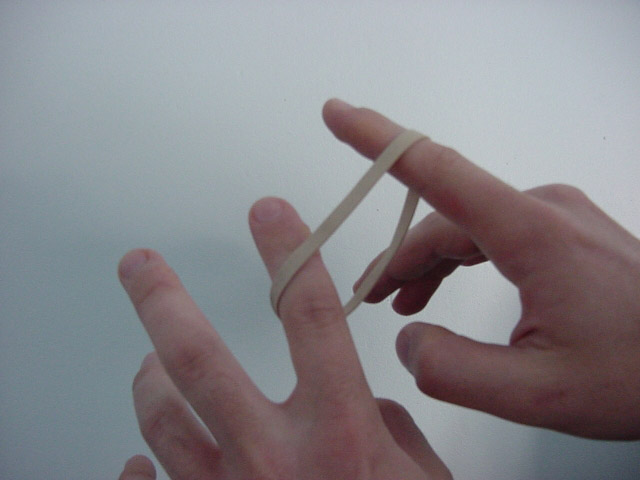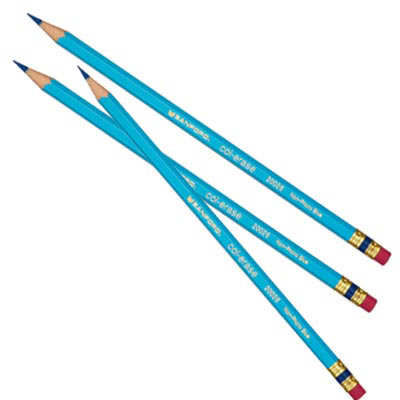Lesson: Build a Robot Arm
(Provided courtesy of Tryengineering.org)
In this lesson for ages 8 to 18, students work in teams to design and build a working robotic arm from a set of everyday items. Each arm should be able to pick up a Styrofoam cup.
Synopsis
Participating teams of three or four students are provided with a bag including the materials listed below. Each team must use the materials to design and build a working robot arm. The robot arm must be at least 18 inches in length and be able to pick up an empty Styrofoam cup. Teams of students must agree on a design for the robot arm and identify what materials will be used. Students will draw a sketch of their agreed upon design prior to construction. Resulting robot arms are then tested and checked for range of motion and satisfaction of the given criteria. Note: This lesson plan is designed for classroom use only, with supervision by a teacher familiar with electrical and electronic concepts.
Objectives
As a result of this activity, students should develop an understanding of:
- design concepts
- teamwork needed in the design process
- impact of technology in manufacturing
Materials
– 3″ wide and approx. 22″ long strips of cardboard– 5 or so
– Binder clips (different sizes)– 8 or more
– Brads– at least 10
– Clothespins– 6
– Craft sticks–10-15
– Fishing line– 3-4 feet
– Hangers– 1 or 2
– Paper clips (diff. Sizes)– 10-15
– Pencils– 3-4
– Rubber bands (different sizes)–15
– Tape– clear and masking (partial rolls should be fine)
– Twine– 3-4 feet
– Various size scraps of cardboard, 10 assorted
For Teachers
Divide your class into teams of three or four students, and provide student handout. Students are then instructed to examine the materials provided (see list below) and to work as a team to design and build a robot arm out of the materials. The robot arm must be at least 18 inches in length and be able to pick up an empty Styrofoam cup. Teams of students must agree on a design for the robot arm and identify what materials will be used. Students should draw a sketch of their agreed upon design prior to construction. Explain that teamwork, trial, and error are part of the design process. There is no “right” answer to the problem – each team’s creativity will likely generate an arm that is unique from the others designed in your class.
Questions for students:
– Did you use all the materials provided to you? Why, or why not?
– Which item was most critical to your robot arm design?
– How did working as a team help in the design process?
– Were there any drawbacks to designing as a team?
– What did you learn from the designs developed by other teams?
– Name three industries that make use of robots in manufacturing:
Standards:
National Science Education Standards Grades 5-8 (ages 10 – 14)
CONTENT STANDARD B: Physical Science: As a result of their activities, all students should develop an understanding of Motions and forces, Transfer of energy
National Science Education Standards Grades 9-12 (ages 14 – 18)
CONTENT STANDARD B: Physical Science: As a result of their activities, all students should develop understanding of Motions and forces, Interactions of energy and matter
CONTENT STANDARD E: Science and Technology: As a result of activities, all students should develop Abilities of technological design, Understandings about science and technology
Standards for Technological Literacy – All Ages
THE NATURE OF TECHNOLOGY
Standard 3: Students will develop an understanding of the relationships among technologies and the connections between technology and other fields of study.
TECHNOLOGY AND SOCIETY
Standard 7: Students will develop an understanding of the influence of technology on history.
DESIGN
Standard 9: Students will develop an understanding of engineering design.
Standard 10: Students will develop an understanding of the role of troubleshooting, research and development, invention and innovation, and experimentation in problem solving.
ABILITIES FOR THE TECHNOLOGICAL WORLD
Standard 11: Students will develop abilities to apply the design process.
THE DESIGNED WORLD
Standard 19: Students will develop an understanding of and be able to select and use manufacturing technologies.
Filed under: Grades 6-8, Grades 9-12, Lesson Plans
Tags: Building robots, Class Activities, Lesson Plan, Robotics








